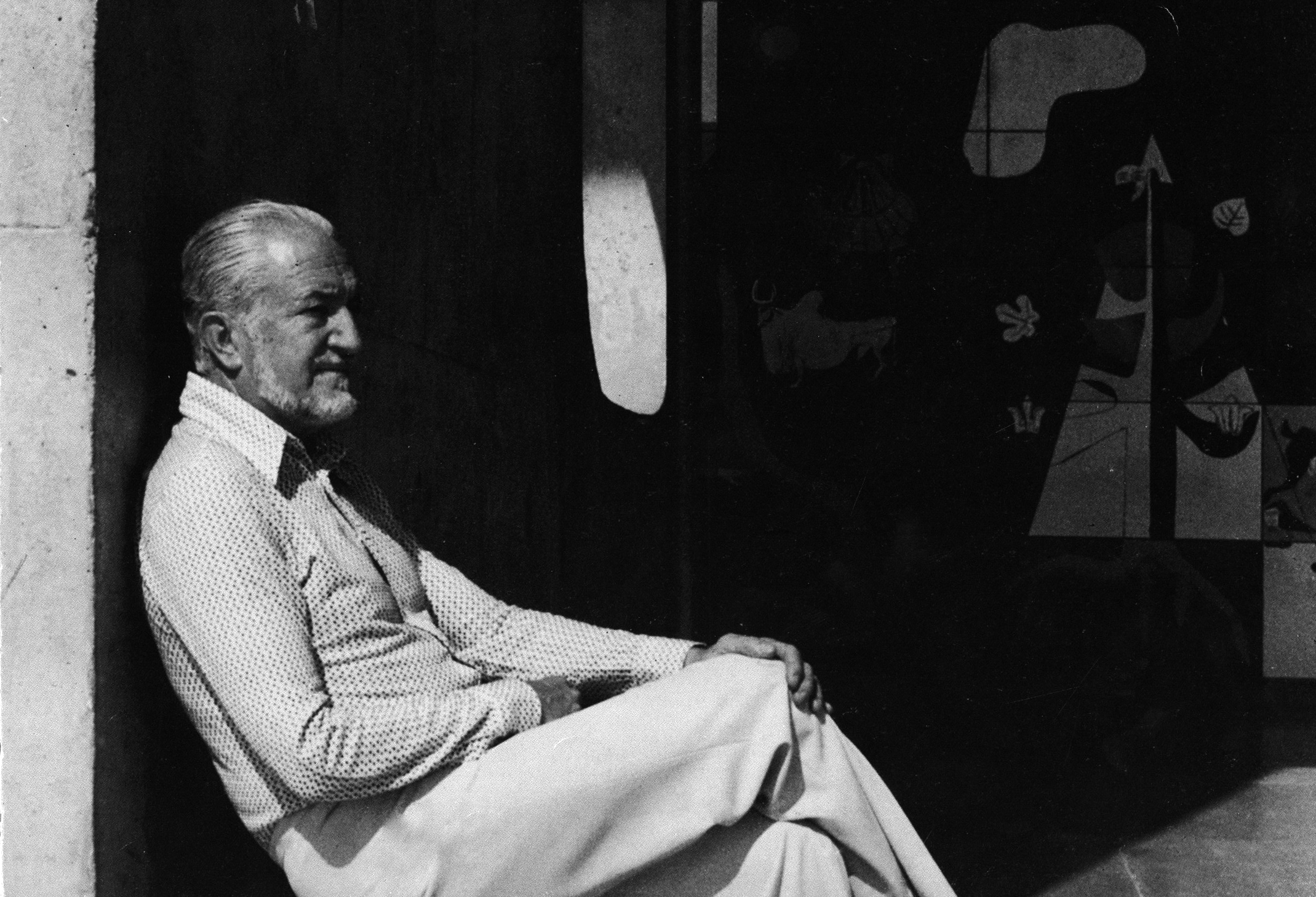
Fernando Moreno Barberá (Ceuta 1913 Madrid 1998) obtained his architect’s degree in 1940 by the School of Architecture of Madrid and PhD in 1966. Referring the second surname to his Valencian link, he was first cousin of another architect notable, Miguel Colombia Barberá, key player in the first stage of the School of Valencia.
Since his youth he had excelled in the studies with the Extraordinary Baccalaureate Award. Once qualified, he was granted a scholarship by the Junta de Ampliación de Estudios of the Consejo Superior de Investigaciones Científicas and, from 1941 to 1943, while he held the position of attaché to the Embassy of Spain in the German capital, was pensioned by the Humboldt Stiftung of Berlin, and by the Deutscher Akademischer Austanschdienst, to carry out architecture studies, expanding studies of urbanism in the Technische Hochschule of Charlottenburg, Berlin, (1941) and in the Technische Hochschule of Stuttgart (1942). During his stay in Germany he was working in the office of Professor Paul Bonatz in urban planning projects and public buildings in Greater Berlin and Stuttgart, all this experience being of the utmost interest for his training, as he often stated. He obtained a research grant in 1959 for the International Cooperation Administration of the government of the United States. He also collaborated in projects of the American air bases in Spain (AESB). Later, his possible relationship with Richard Neutra, during the installation of North American bases in Spain, could also have been significant.
From the forties, Moreno Barberá was in charge of the civil constructions of the Ministry of Education, having carried out such important works as the university in Valencia, consisting of the Faculty of Law (1956-1958), Technical School Superior of Agricultural Engineers (1958-1960), Faculty of Philosophy and Letters (1960-1969) and Laboratories of the Faculty of Sciences (1965-1966).
Within the teaching chapter are significant works related to labor education, which may have some relationship -tipological and functional- with the Labor University of Cheste. These include the labor institutes of Medina del Campo (1945-1948), Trujillo (1945-1948) and Nájera (1961-1963), the Apprentice School of Monforte de Lemos (1958-1959), the industrial master’s schools de Vigo (1958-1958) and Santiago de Compostela (1958-1959), as well as the School of Technical Engineering in the San Blas neighborhood of Madrid (1961-1963). Subsequent to Cheste’s work would be the orientation centers -labor universities- of Las Palmas (1970), Toledo (1970-1978) and Málaga (1972-1978), as well as the Center for the Professional Development of Workers (1970-1973).
Between 1954 and 1965, Fernando Moreno Barberá was head of the architecture office and CEO of the National Tourism Company of the National Institute of Industry, an institution that would undertake an important restoration work of unique historic buildings destined for the emerging state hotel activity.
Of its dwelling architecture and whose prizes suggest that the professional activity in this field deserves to be mentioned, will materialize in collaboration with Julio Cano Lasso and for the National Institute of Housing.
As a synthesis, it can be said that, within his long professional career, he made a wide range of projects (some not built) such as theaters, hotels, universities, higher research centers, secondary and professional education, industrial buildings, hospitals, partial plans of ordination of several cities and urbanizations, ordering of neighborhoods and residential buildings, among others. Throughout his career he would receive multiple awards among which include the Diploma of Real Estate and Urban Development, of the Official College of Agents of Real Estate in Valencia, by the Labor University of Cheste (1969); and the Silver Hexagon, by Habitation Space International Award, by the Student Residence of Cheste (1979).
